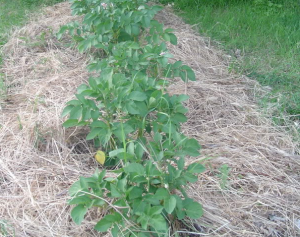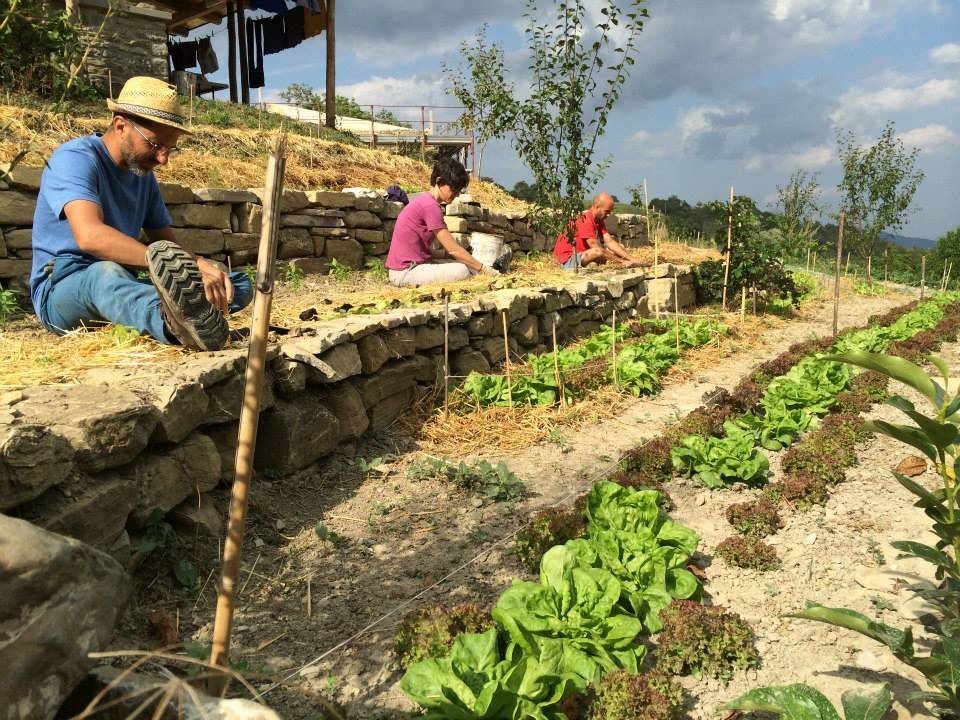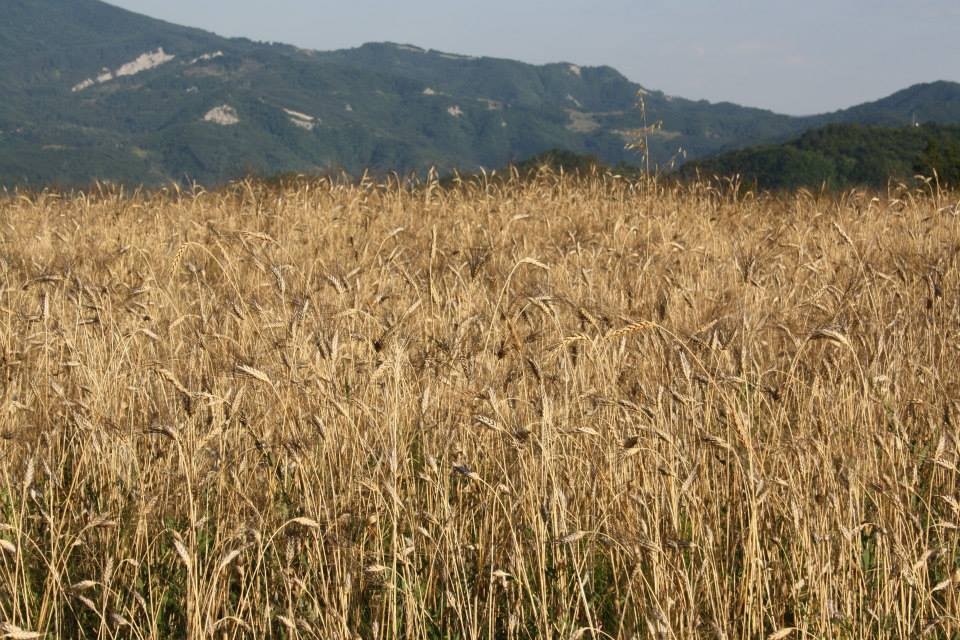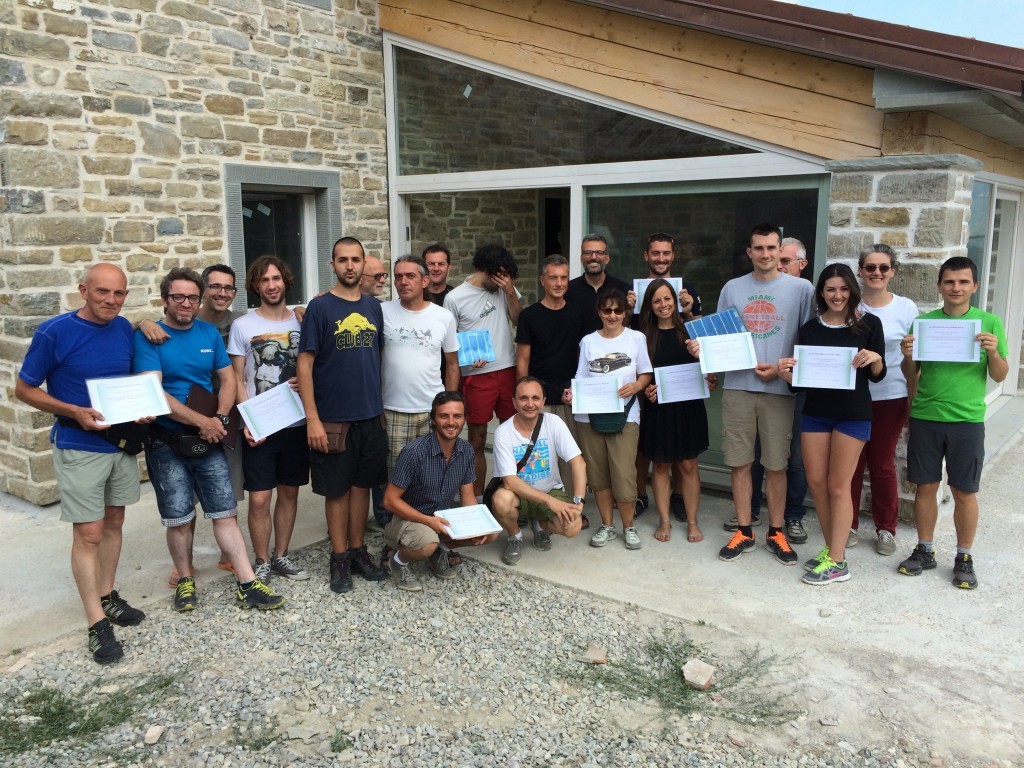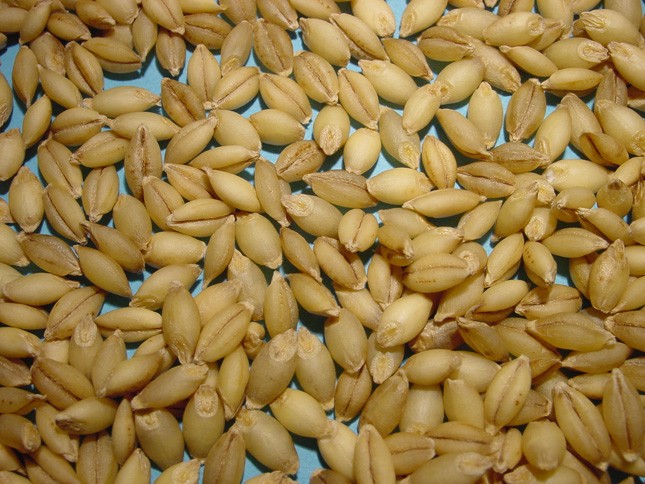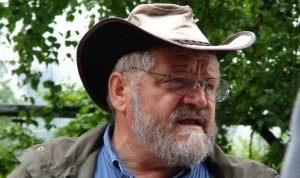EXPERIMENTS AT THE FARM: growing potatoes
During the course on How to create an eco-friendly vegetable garden with Sergio Abram (April 2011) we decided to spare 3 vegetable beds for growing potatoes (Kennebeq variety).
After preparing the ground and building the bed, we planted the potatoes and covered them with a little of straw. Potatoes don’t need to be covered with ground, instead they need darkness. The distance among potatoes was 40-50 cm and the bed had an irrigation system that provides water during the whole growing phase. Potatoes don’t need any care, or at least that’s what we thought.
FOOD AND ENERGY SELF-SUFFICIENCY FOR A BETTER FUTURE
We believe that food and energy self-sufficiency and green building can be the answers to the great challenges we are living for the following reasons:
GENTIL ROSSO AND SENATORE CAPPELLI WHEAT FLOURS
The first two flours produced at the Farm with 2014 harvest are now available.
GREEN RENOVATION OF THE HISTORICAL BUILDING “CASELLE DI PAGANICO”
After almost three years spent reorganizing the fields, terracing, creating vegetable gardens, building dry walls, fences, a water supply system, laying underground electric and telephone cables and planting ancient fruit trees, in 2014 we finally started the first renovation works of the historical building “Caselle di Paganico” in line with the pillars of the whole project.
BUILDING SOLAR PANELS IS EASY!
From July 11th to 13th 2015 the Farm hosted a course on self-construction of solar panels. The expert Luigi Lisi taught participants the theory and practice for the construction of a solar panel by using recyclable materials and purchased solar cells. Luigi also provided examples on how to turn a house or another project self-sufficient in terms of energy production.
We took advantage of this happy occasion to ask Luigi few questions.
OUR PASTA: more than organic, from ancient and local grains
At the Self-Sufficiency Farm we only produce food which is good both for our health and the environment!
Ancient grains are grains varieties that are largely unchanged over the last several hundred years, that is to say that they have not been modified by man in order to increase their productivity. One of the most known example in Italy is the wheat variety “Senatore Cappelli”, but there are many others depending on the region of production. Other examples are: Saragolla, Tumminia, Einkorn wheat, Gentil Rosso, Verna, Rieti, etc.
TWO-ROW HULLESS BARLEY “LEONESSA”
Hulless or “naked” barley (Hordeum vulgare) is a form of domesticated barley with an easier-to-remove hull.
The early-ripening variety called “Leonessa” is organically cultivated at the Self-Sufficiency Farm. This type of barley was selected from a local population by geneticist Nazzareno Strampelli in 1936, then it has been revived by CERMIS (Center of research for the improvement of vegetable species) that dealt with the protection of Leonessa in the first years of the 80s.
A new style of ecotourism
At La Fattoria dell’Autosufficienza the experience of the surrounding nature goes along with the ecological building of the agritourism, for a 360° green holiday
The term ecotourism is thought to be coined by Mexican architect Hector Ceballos-Lascurain, author of several books on this topic. In 1988 he gave the following definition of ecotourism: «Ecotourism is that tourism that involves traveling to relatively undisturbed natural areas with the specific object of studying, admiring and enjoying the scenery and its wild plants and animals, as well as any existing cultural aspects (both past and present) found in these areas».
WILD VEGETATION of the Farm
FERNS AND PTERIDOPHYTES
- Horsetail (Equisetum sylvaticum, Equisetum arvense)
- Bracken (Pteridium aquilinum)
Interview to Francesco Rosso by Sepp Holzer
Sepp Holzer has become famous as the “rebel farmer”. He is a pioneer of the concept of permaculture and he has demonstrated a total commitment in this method of farming. He has a 40-year experience in alternative farming by trying out a lot of different techniques and for this reason he is now the most famous expert of permaculture in Europe.
Sepp Holzer carries out successful permaculture projects all over the world, both in small and big farms and regardless of the climatic conditions, from the desert to Siberia.
Newsletter
ARGOMENTI
- Activities (8)
- Attività (10)
- Attrattive (16)
- Cosa fare (22)
- Farm products (4)
- Fattoria dell'autosufficienza (40)
- Fattoria dell'autosufficienza (62)
- Fauna (8)
- Flora (5)
- I nostri modelli (15)
- Istruzioni per viaggiare (2)
- News (63)
- News (97)
- Our models (14)
- Permacultura (30)
- Permaculture (23)
- Prodotti della fattoria (4)
- Senza categoria (4)
- Senza categoria (2)
- Things to do (22)
- Tourist attractions (15)
